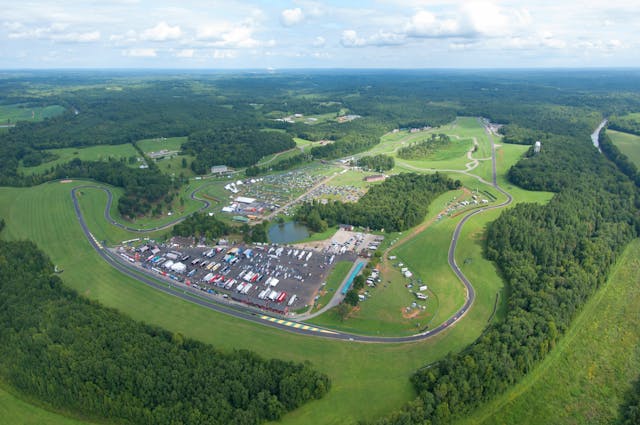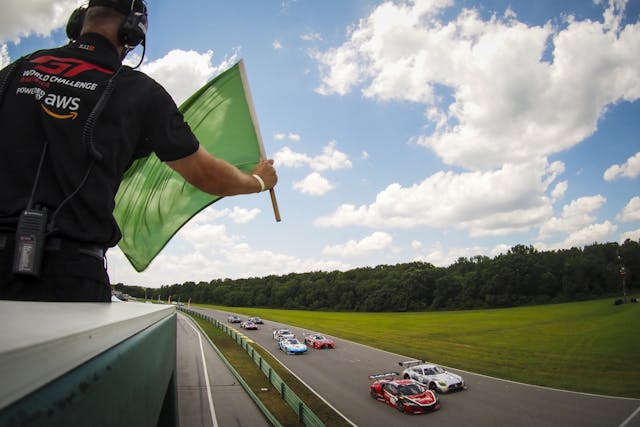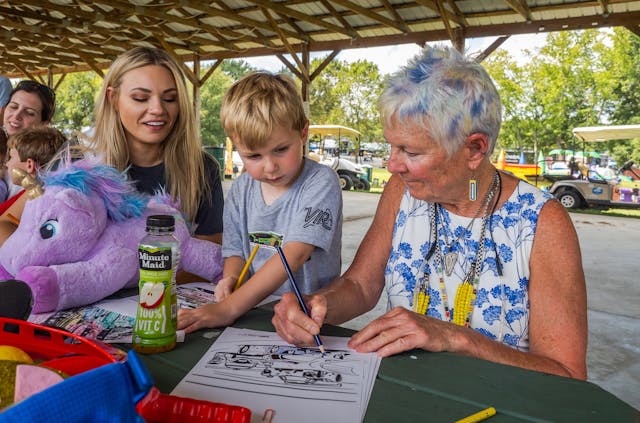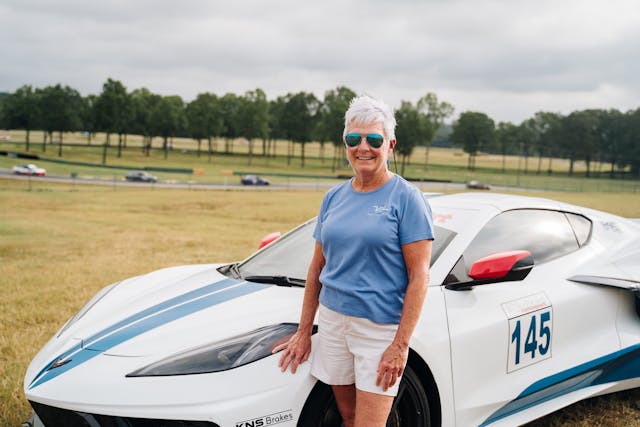Meet Connie Nyholm, one of the most influential women in motorsports
When I tell Virginia International Raceway co-owner and CEO Connie Nyholm that she just might be one of the most influential women in American motorsports, she bursts out laughing. “Wow, that’s pretty scary,” she says as, outside her office, cars roar by during practice for the SCCA National Championship Runoffs. “I pick up trash at the track like everybody else.”
To be sure, she won’t be the most prominent figure at next week’s Women With Drive II conference, where the headliners will include Indy 500 veteran Lyn St. James, current professional racer Katherine Legge, IndyCar team owner Beth Paretta, and Lisa Boggs, the director of motorsports at Bridgestone. But Nyholm’s accomplishments are second to none.
She was present at the birth of VIR, helping resurrect the track in 2000 after it had lain dormant for roughly 25 years, and she was a prime mover in adding picturesque landscaping and posh amenities to the 1,250-acre facility in a bucolic patch of the Virginia Piedmont. Now a 50-percent co-owner, she’s transformed the 3.2-mile raceway into one of the most dramatic destination circuits in North America. Which is what you’d expect of a woman once dubbed “the auto queen.”

Ironically, Nyholm came to track ownership not from the world of racing but through a career in commercial real estate, where she specialized in finding sites for companies such as Monroe, Meineke and Pep Boys (hence the “auto queen” nickname). In 1998, she met Harvey Siegel, a New York City developer who vintage-raced an Elva with SVRA.
“We were starting to lose our venues,” Siegel recalls. He began considering the possibility of reviving one of the now-defunct tracks where he’d raced with SCCA back in the 1950s and ’60s. He looked at Marlboro, Bridgehampton, Vineland, and Thompson, before visiting VIR—which had opened in 1957 but closed in 1974—and realizing that he’d hit pay dirt.
Nyholm, 63, recalls standing with Siegel by the centuries-old oak tree that served as the landmark for the track’s best-known turn. “I’m like, ‘Oh, my God, my life’s about to change. I can’t wait to do this project,’” she says.
It was the first racetrack she’d ever visited.
Siegel and Nyholm were determined to preserve the integrity of the circuit. Even though the track was widened, the centerline was maintained. This was only half of the equation. As Nyholm explains, “The vision that Harvey painted in his mind was building a motorsport resort—a grand, historic road course with housing and restaurants and other activities.”

When the track opened in 2000, it seemed to be leading the development of new racetracks based on the high-dollar golf country-club model, with substantial initiation and greens fees and facilities prioritized for members. Tracks like Monticello Motor Club in upstate New York and Autobahn Country Club near Chicago have made this approach work.
VIR went a different route.
Yes, it has about 350 members, who paid a modest $3,500 initiation fee and fork over $500 a month, but they’ve never been essential to the track’s success. “Some racetracks sell memberships to get their money upfront to actually produce the project,” Nyholm says. “But my analysis, when I got involved, was that we would never sell enough memberships to sustain a property this huge.”
These days, between race dates, track days, school programs, military training, and rentals for various other purposes, VIR is booked about 280 days a year. During 2022, amateur races were staged by a veritable alphabet soup of sanctioning bodies—SCCA, NASA, SVRA, PCA, AER and WRL. The list also includes ChampCar and several local clubs.
The appeal is a track that is not only beautiful but also technical and daunting. The corner featuring the highest pucker-factor is Turn 10, the fast left-hander at the end of the ultra-quick Climbing Esses. “It scares the crap out of people,” Nyholm says with another laugh. “It’s uphill, you get light and you’ve got to keep it on the track. I love it.”

Although Siegel would have been content operating VIR strictly as a club-racing facility, Nyholm was adamant about showcasing pro races to attract paying customers. Last winter, the track spent several millions of dollars on track and safety improvements. Also, all 52 rooms for rent on site are slated to be gutted and remodeled, and 18 new villas—bringing the total to 30—are planned.
This past year, VIR hosted spectator events sanctioned by both North America’s top two pro sanctioning bodies IMSA and SRO. And Trans Am is coming next week. In the future, Nyholm would love to secure a NASCAR date. “We’re not really thinking about a Cup race, but we hope to be considered for a truck race or Xfinity,” she says. “In our surveys, IndyCar is the number one request we get from the fans.”
Although she’d always been interested in cars, Nyholm knew nothing about racing until she started running VIR. The experience imbued her with a need for speed, and for about 10 years, she vintage-raced a Datsun 510, an Elva Mk VII, a Merlyn Mark 7S and an Allard J2X. “They were all so different that I never got really great at any of them,” she admits.
Nyholm hung up her helmet about 10 years ago, but she kept the 510 just in case she decides to get back into racing. Meanwhile, she makes do with a C8 Corvette, a Lotus Elise and a “VIR-green” 2003 Audi RS 6 that she recently bought on Bring a Trailer, with plans to have the ECU flashed. So she’s still a woman in a hurry, which is just who you want in charge of one of the country’s premier racetracks.

Check out the Hagerty Media homepage so you don’t miss a single story, or better yet, bookmark it.


